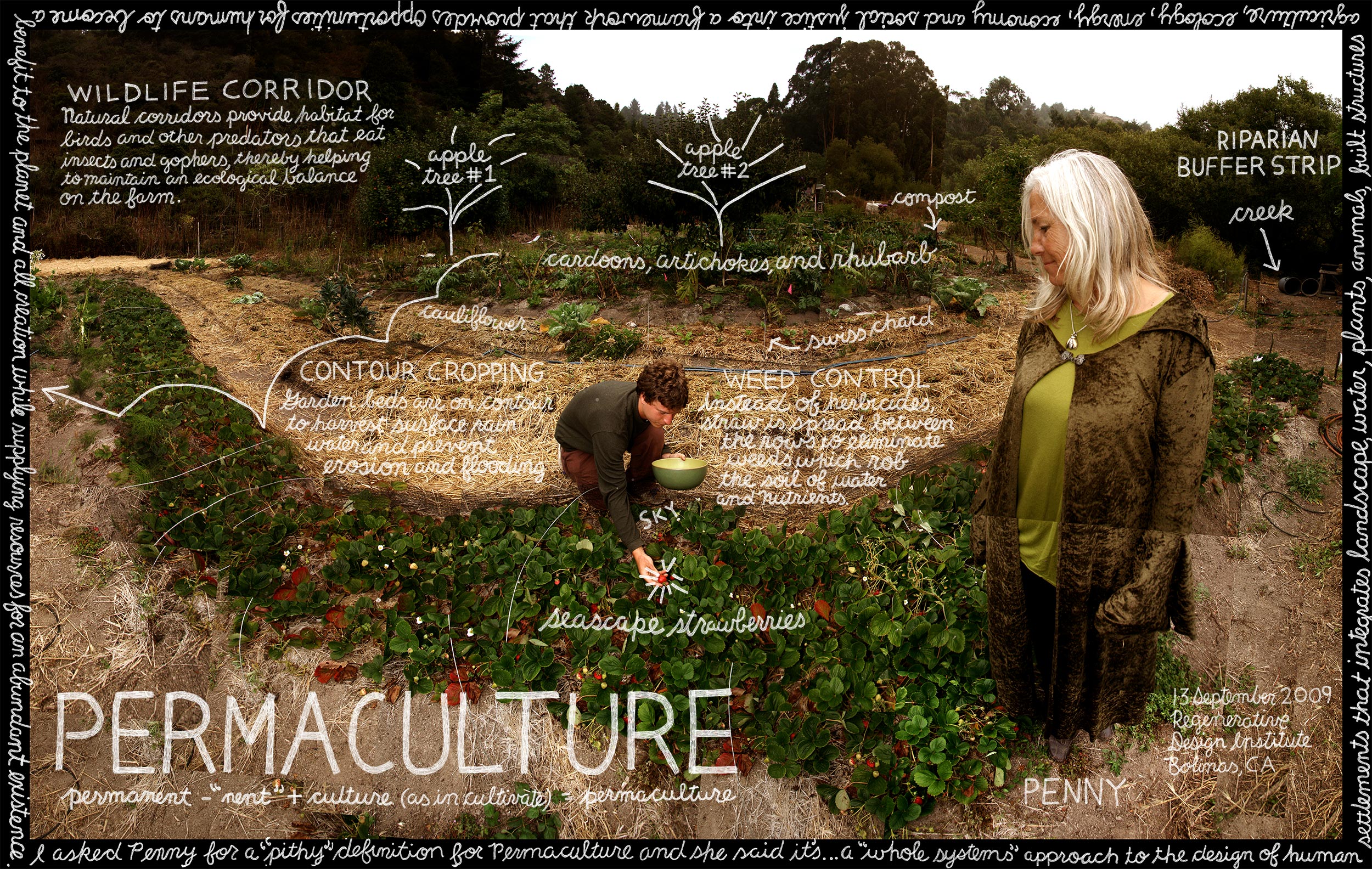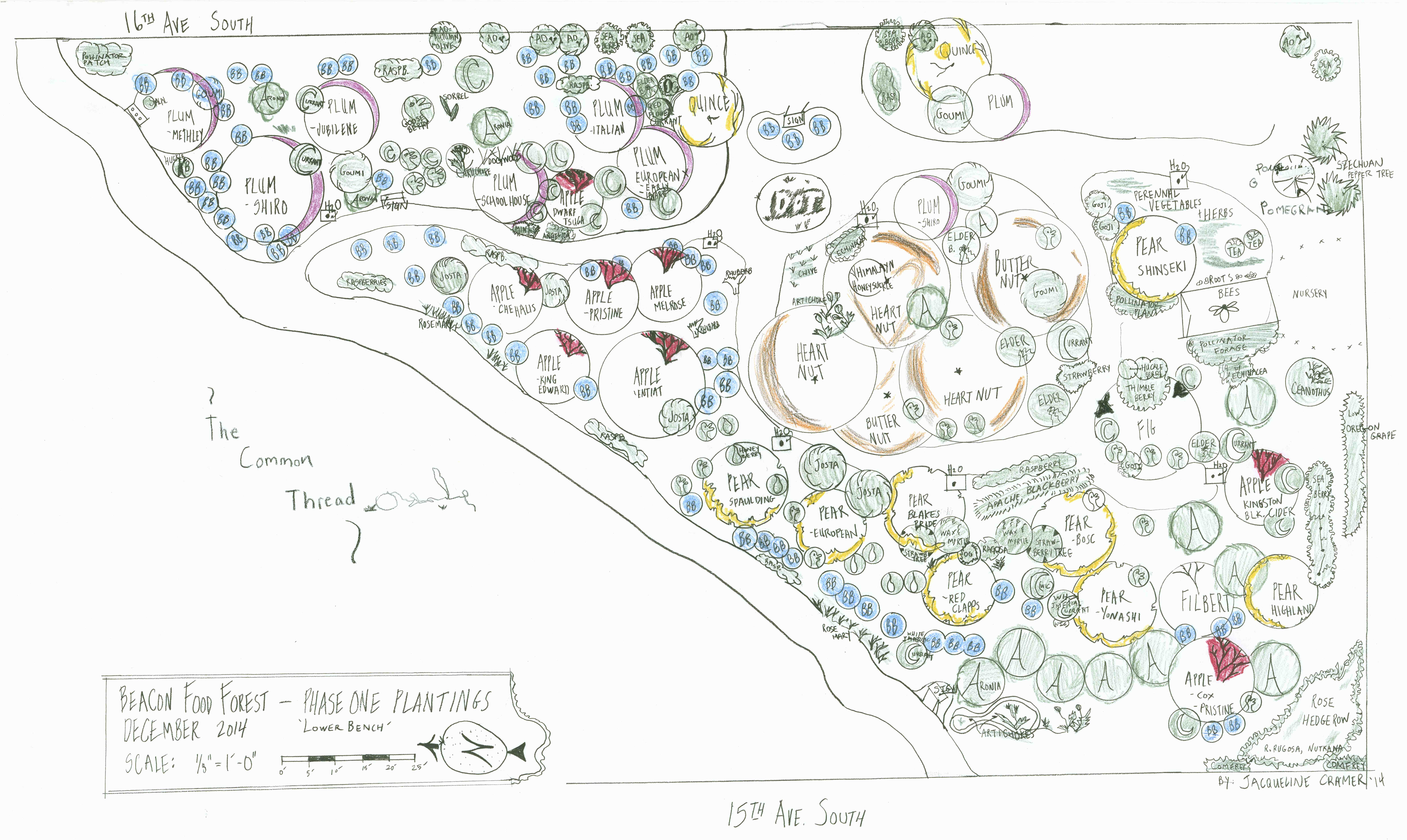“The word ‘permaculture’ comes from the melding of two words: ‘permanent culture’ and ‘permanent agriculture’… It’s something that’s able to sustain itself by the very nature in which it’s constructed.
-Rhamis Kent, consultant

#Permaculture can help agriculture be a major part of the solution to #climatechange. @deliciousliving #foodlist
Permaculture can help mitigate greenhouse gas (GHG) emissions, sequester carbon in the soil, and control climate change, making it a systematic solution to a systematic problem.
In fact, according to a report by the Rodale Institute, “organic agriculture could sequester nearly 40 percent of current CO2 emissions. In other words, instead of being a major cause of global warming, agriculture could be a major part of the solution.”
Title: Permaculture
Location: Regenerative Design Institute, Bolinas, CA
Featuring: Penny Livingston-Stark
Penny Livingston, a farmer and educator in Bolinas, California, stands in her garden and witnesses her surroundings differently than most. Bird migrations, deer movement, and even raccoons passing along the creek’s steep banks define a wildlife corridor—all around and above. These must be carefully preserved. Willows, native currants, and hazelnut trees line the creek. These create natural riparian buffers, earthen barriers that hold the farm’s vital soil nutrients in the ground instead of them leaching into nearby waterways. Curves gently cut into the soil create to create contoured swales. These capture rainwater, redirecting it into the ground, where it can be utilized by nearby plant roots. FInally, food forests, multilayered gardens, allow some crops to be planted above and below each other. These carefully considered design principles, each inspired by lessons learned from the natural world are examples of permaculture.
Penny explains that permaculture is permanent—“nent” + culture (as in cultivate). It’s a “whole systems” approach to the design of human settlements that integrates landscape, water, plants, animals, agriculture structures, ecology, energy, economy, and social justice into a framework that provides opportunities for humans to become benefit to the planet and all creation while supplying resources for an abundant existence.
Expanding awareness with permaculture
“Learning to work with the earth not only creates a healthier environment, it also nourishes the people who live in it.”
-Penny Livingston-Stark
Overflowing with abundance, Commonweal Garden illustrates the bounty of permaculture systems. In this video, Penny Livingston-Stark, founder of Regenerative Design Institute and permaculture expert, demonstrates “a design science” that integrates stability and resilience of a natural ecosystem on her farm.
Beacon Food Forest: A community's dream of providing free food
Imagine a food forest where you can reach out for a tomato at arm’s length, pluck a green bean from above your head and discover scented herbs underfoot. This experience might just be possible in Seattle’s Beacon Food Forest (BFF). After the idea for the edible forest was planted in 2009, the canopy layers were developed according to permaculture design concepts. Some initial fears over theft or greedy pickers have been quashed because “the young food forest already yields more than is gathered.”
Today, “tomatoes, zucchini, green beans, acorn squash, Swiss chard, and other delights [are] all given freely.” Situated in a diverse neighborhood, the forest is open to all, and attracts visitors from across the world.
Three things you can do:
- Catch and store energy! By developing systems that collect resources when they are abundant, we can use them in times of need.
- Produce no waste! By valuing and making use of all the resources that are available to us, nothing goes to waste.
- Use and value diversity! Diversity reduces vulnerability to a variety of threats and takes advantage of the unique nature of the environment in which it resides

Do you think getting more involved in the natural world is a good thing for the food system?
For the past three years, the Lexicon of Sustainability has sought out the foremost practitioners of sustainability in food and farming to gain their insights and experiences on this important subject. What began as a photography project to spread their knowledge has grown to include short films, study guides, traveling shows, a book, and a website where people can add their own terms to this ever-evolving lexicon. See more at www.lexiconofsustainability.com

